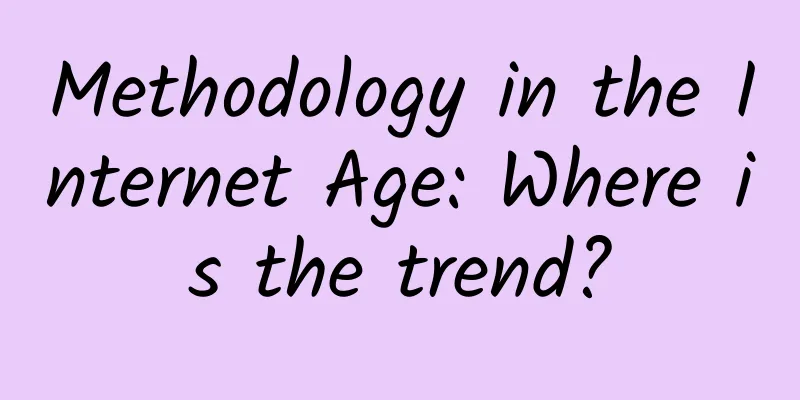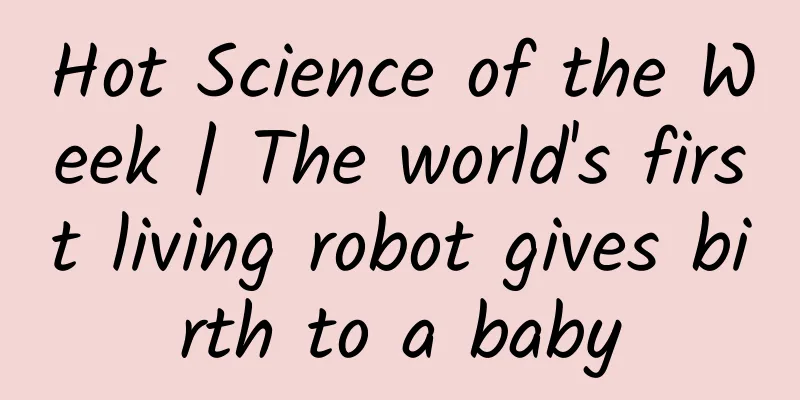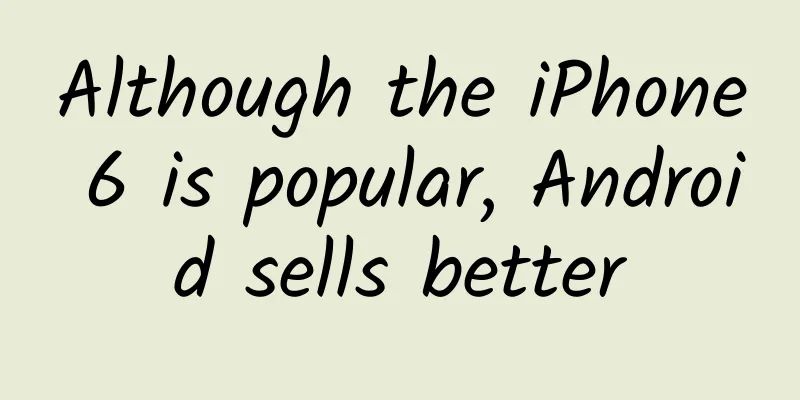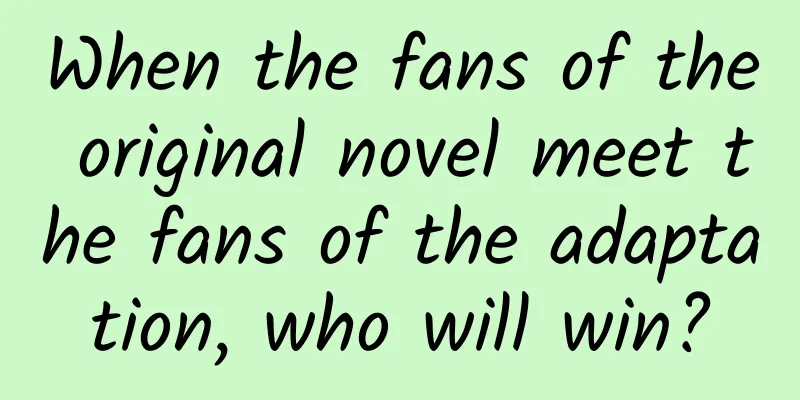Methodology in the Internet Age: Where is the trend?

|
Many people say that we should stand on the wind, many people say that we should go with the flow, and finding the right time is more important than working hard. However, those who say this often overlook a basic fact: how can I identify where the wind is? Where is the way? Figuratively speaking, our world is developing in this way. The wave of technology and the change of people's mentality will bring the power to reconstruct society. At this time, there will be potential blank areas between people's needs and reality. This blank area will eventually be filled by new products or upgrades of existing products. This filling process is often manifested as a surge of waves. For example: the emergence of the Internet will obviously establish a universal connection between people, people and information, and people and things. It can be said that once the Internet appears in these three fields, opportunities will inevitably arise. Although we cannot predict when it is not developed, it will eventually be represented by SNS represented by Facebook, search represented by Google, and e-commerce represented by Amazon. Seizing blank areas is very similar to the process of occupying wasteland. As soon as BAT appeared, the potential blank areas brought by the new technology of the Internet were undoubtedly occupied in large blocks, and others must seize their own territory in niche areas such as O2O. Similar to the above-mentioned technology expanding the scope of people's needs, changes in people's mentality will also give rise to blank areas. I have always divided the development of mobile phones into three stages, and these three stages just reflect the changes in people's mentality (not to say that it has nothing to do with technology). The first generation of products is based on specific functions to solve people's specific needs. Products are tools. PCs, printers, copiers, Word, etc. are all such products. Under this idea, in order to create a successful product, it is necessary to do market research, planning, production, and control quality and costs. Most products have been manufactured in this way since the Industrial Revolution. Lenovo also rose in this model. The second generation of products added value such as taste in addition to function, which is represented by the iPhone. This is a huge change in the development model compared with the previous generation of products. Taste is extremely subjective. Function requires research, but taste is not very helpful even if it is researched. After the user experience, which was originally not valued, was promoted to a very important position, the conceptual integrity of the product became very important. Multiple people's consultation can well determine the function of a product, but the experience pieced together is destined to be mediocre. In order to ensure the integrity of the product experience, the best way is to have one person make unified decisions, and the product reflects this person's taste. So the product manager has become important. Jobs ushered in the era of product managers, and WeChat's Zhang Xiaolong continued this story. The third generation of products, in addition to functions and experience, also adds the element of emotional belonging. This is the change in the story of Xiaomi. The mobile phone is still the same mobile phone, but when creating the product, users have been involved and become part of the product. The product solves real problems while also solving a certain emotional belonging problem, rather than simply pursuing the ultimate user experience. It covers users more completely. It is precisely because of this that there is a continuous competition between Mi fans and Mi haters. Usefulness, taste, and belonging reflect changes in mentality, which are mutually dependent on the development of science and technology, but are also separate dimensions. The richer people are, the more their mentality changes independently of reality. Obviously, this change in mentality and technology will expand potential blank areas. No matter how good Apple's mobile phone is, people would not buy it in the 1970s. If what is said above is correct, then the key to finding your own direction becomes positioning yourself in the blank area brought about by changes in technology and people's mentality. Where to find opportunities The previous article ( Methodology in the Internet Age: Superposition of the Quantum and Newtonian Worlds ) assumes that the deeper the impact of the Internet, the more leaps in reflexivity and fields will occur, but due to the constraints of the real world, the final environment is a superposition of Newton and quantum. If this is correct, it means that entrepreneurs need to think in a leapfrog way to find opportunities, which further means that we need to refine some basic models. In fact, there are always two modes to do this kind of recognition, one is more specific and called bottom-up; the other is more abstract and called top-down. The bottom-up model is commonly used, but it is summarized by the words such as finding pain points. In our lives, we can always find something that makes us dissatisfied, maybe it is expensive, maybe it is inconvenient, and using the Internet to solve it and make it more in line with people's needs is the bottom-up approach. This method is related to personal growth experience. From various reports, it can be seen that Jack Ma's e-commerce and Robin Li's search are basically the same process. This method is more specific, but it is easy to not know the reason, and it has a heavy luck component. It depends a lot on people's intuition and experience. The top-down model is not easy to understand. Imagine that the fundamental feature of the Internet is to establish universal connections. The word connection can obviously be decomposed into people, people and things, and people and information. When the amount of information expands infinitely, people must need an effective way to obtain information, which is the search engine. This method can grasp the essential trend, but the disadvantage is that it does not know the distance from reality. In theory, when the Internet was established, we can infer that BBS will be derived from the connection between people, and when people's personality is strengthened, there will be things like blogs; e-commerce will be generated from the connection between people and things; search engines will be generated from the connection between people and information, and so on. Although it was impossible to define the specific form of this product at that time, it was inferred that such a thing existed. But you can't know whether the timing is right or not. After all, Ma Huateng once thought about selling Tencent. Both models are useful, but both have their own limitations. They are roughly enough to find where opportunities are, but beyond that, a method is needed to measure whether a specific direction is valuable. Can you find gold? Using the above model, you can always find some direction, but before investing resources, you must obviously predict whether you can find gold in this direction. The formal judgment standard is very simple: regardless of whether it works in the end, it must be different. This difference is not what the parties who make the products think is the same or different, because the parties can easily see the details. From the perspective of details, 58, Ganji, and Baixing are all different. The key is whether the general audience can recognize this difference. A general mobile phone costs 3,000 yuan, and your similar mobile phone costs 1,799. This is different. Others deliver in 3 days, and you deliver in 1 day. This is different. The difference between 58, Ganji, and Baixing is not difference. In addition, you can also make some judgments based on the value that the direction can generate. There are so many products that people feel a little dizzy, but in fact, no matter how colorful an idea is, it basically returns to three fundamental models in the macro sense: either subvert the existing value chain and make things cheaper than they are now, such as e-commerce; or make things simpler, such as search; or be interesting and fun enough, such as social networks and games. The greater the universality, the greater the potential of the business, and the more gold you can dig if you do it well. For example, everyone uses mobile phones, and if you make it cheap and easy to use, then the potential is much greater than that of electric heaters. The reason why 360's market value in security is not as good as Baidu's is probably not because of how well people do it, but because security and search are inherently built-in with a certain volume. Differentiation plus being cheap enough (reducing practical costs), useful enough (improving efficiency) or interesting enough (ensuring the amount of information) can actually kill many directions and eliminate many worthless attempts. Those who meet this standard may not necessarily succeed, but those who do not will probably fail in the end. Conclusion From what I personally see on a daily basis, entrepreneurs prefer to use a bottom-up approach to find their own direction, rather than a top-down approach. But in fact, as the blank areas are filled up more and more, the top-down approach will become more and more effective. After all, it can help us find some areas that we cannot intuitively feel, and a person’s experience is limited, which often limits the vision and makes the bottom-up approach more and more difficult. There are not many articles that systematically explain the top-down model, but I have used this method to analyze social networks (see: The core of Internet thinking: Seizing the commanding heights of consciousness space , Wrong-dimensional competition: How to avoid falling into the deadlock of the red ocean? SNS2.0: Defeat WeChat with a sense of belonging ) and Xiaomi (see: From the perspective of "Sense of Participation" to see the innovation and hidden worries of Xiaomi's model ). In these articles, I showed how this model works. From the perspective of actual development, my analysis is basically correct. SNS2.0 is becoming more and more common, and Xiaomi's recruitment of Lao Chen for horizontal expansion is also consistent with the previous analysis and judgment. Recently, people often mention that experience is more important than knowledge. When the direction is wrong, all subsequent efforts will become worthless. However, this top-down model will inevitably become more and more valuable in predicting the future. Lean can only solve product-level problems, but not direction problems. After all, it is still a strange thing that the original intention was to make mobile phones and then ended up making cars. As a winner of Toutiao's Qingyun Plan and Baijiahao's Bai+ Plan, the 2019 Baidu Digital Author of the Year, the Baijiahao's Most Popular Author in the Technology Field, the 2019 Sogou Technology and Culture Author, and the 2021 Baijiahao Quarterly Influential Creator, he has won many awards, including the 2013 Sohu Best Industry Media Person, the 2015 China New Media Entrepreneurship Competition Beijing Third Place, the 2015 Guangmang Experience Award, the 2015 China New Media Entrepreneurship Competition Finals Third Place, and the 2018 Baidu Dynamic Annual Powerful Celebrity. |
<<: Jilu Router's Ad Blocking Issue Forces Video Websites to Reform
>>: The billion dollars Lei Jun gave to Chen Tong might go to Baidu?
Recommend
Can I still exercise if I have high blood pressure? This kind of exercise is as effective as blood pressure medication!
They say high blood pressure It is the "stan...
Daguang Kakaka's crazy cash-in class, five Douyin silent money-making tracks, nanny-level teaching
Daguang Kakaka's Crazy Cash-in Course, Five D...
The technical secrets behind Alipay's Double 11 sales over the years
Since the launch of the e-commerce festival Doubl...
How to do marketing promotion? Master these 14 methods!
Marketing promotion is never just about making pe...
Optimize 200 series AMD releases the latest 15.7 WHQL driver
AMD has released the latest graphics card catalys...
Shenzhou 16 was successfully launched! Pu Pu takes you to imagine the astronauts' departure from a first-person perspective
Long March 2F rocket takes off (Photo source: Chi...
Beware! Someone fainted from poisoning while cleaning the toilet and was admitted to the ICU. Be careful when using disinfectants
Doctors remind: Be careful when using disinfectan...
Do you also need to uninstall bundled apps on iOS?
[[142115]] The Apple Music streaming music servic...
Android RootTools framework is easy to use
Android Directory Structure data app: User-instal...
To deal with SLE, you must make good use of "strategies" and "military tactics" to attack it, only then can you win
There are thousands of lupus problems. Finding th...
Eating like this will make you sick! 6 bad eating habits that will "eat away" your immunity...
The last week of April every year is World Immuni...
How much does it cost to customize a watch mini program in Handan?
How much does it cost to customize the Handan wat...
The most "romantic" plant in history is actually this!
Autumn and Winter The golden ginkgo is unique in ...
Watch! What will the Shenzhou 14 astronauts do during these days of “business trip”?
With the successful launch of the Shenzhou XIV ma...
How to shoot a video to attract traffic to the live broadcast room?
As we all know, Douyin's traffic is becoming ...









